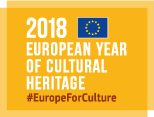ArchAIDE - A novel app for automatic image recognition of archaeological ceramic
Challenge: WHY the innovation has been developed? What problem is addressed and why has not been not solved before?
Every day, archaeologists are working to discover and tell stories around objects from the past, investing considerable time, effort and funding to identify and characterise individual finds. Pottery is of fundamental importance for the comprehension and dating of archaeological contexts, and for understanding the dynamics of production, trade flows, and social interactions. Today, this characterisation and classification of ceramics is carried out manually, through the expertise of specialists and the use of analogue catalogues held in archives and libraries. The ArchAIDE project is funded by the European Union’s Horizon 2020 research and innovation programme and has developed a new app that aims to improve the practice of pottery recognition in archaeology, using the latest automatic image recognition technology.
Solution: WHAT the solution is about? HOW it goes beyond the state of the art?
The goal of ArchAIDE is to optimise and economise the process of pottery identification, making knowledge accessible wherever archaeologists are working. ArchAIDE supports the classification and interpretation work of archaeologists (during fieldwork and post-excavation analysis) with an innovative app for tablets and smartphones, designed as an essential tool for archaeologists. Pottery fragments are photographed, their characteristics sent to a comparative collection (showing typical pottery types and characteristics, against which pottery to be identified by the user is compared), which activates the image recognition system, resulting in a response with all relevant information linked, and ultimately stored, within a database that allows sharing online. This goal has been supported through a range of practical elements, including: a digital comparative collection for multiple pottery types incorporating digitised paper catalogues and multiple photography campaigns; an automatic-as-possible workflow to digitise paper catalogues and improve search and retrieval; a multilingual thesaurus of descriptive pottery terms, including French, German, Spanish, Catalan, English and Italian.
End-users and examples of uses: WHO will beneficiate/ is beneficiating from the solution? WHERE and HOW the solution has been adopted? How will impact people or end-users? Add as more as possible examples of market and society uptakes
The ArchAIDE project has defined a wide stakeholder community, which includes: internal stakeholders in partner institutions who have an interest or involvement in archaeological research or management responsibilities relating to project activities; research institutions active in the field as represented by managers and senior researchers with management duties such as deans, directors etc.; scholars, researchers and students in archaeological disciplines, field archaeologists and the wider scientific community; international networks and research infrastructures in related disciplines. Cultural and ICT companies and ICT developers who may or may not be connected to Cultural Heritage. During the second year of the project, a variety of dissemination events were undertaken to generate feedback about the development direction of the app and underlying technologies, including a major multiplier event held in York in December of 2017, bringing together all stakeholder groups for intensive discussion and analysis. This feedback has informed the onward development of the app, which is currently in beta release. Over the final six months of the project, the app will be tested and its uptake will be monitored. A broad impact on the archaeological daily workflow is expected, and beyond the time frame of the project, the opportunity to involve institutions and researchers to increase comparative collections, and to upgrade the innovation to solve targeted issues is significant.
Future possibilities: Future market perspectives when the innovation will be fully available or in use
The future market perspective for ArchAIDE will be demonstrated by the archaeologists whose work will greatly benefit, both in professional archaeology and in academic research and training. By using the ArchAIDE app and supporting technologies, archaeologists, who work daily using paper catalogues, will be able to directly access information related to individual pottery forms using automated classification tools, or through browsing and advanced search in the digital ArchAIDE pottery catalogues. Through ArchAIDE, the catalogues will take on a new editorial form where the original description of each pottery type is digitised and enriched with new information, relations, images and 3D models. The ArchAIDE approach is particularly interesting for publishers and copyright owners, as it represents an innovative and promising commercial channel. The project is experimenting with the "in-app purchase" method in collaboration with leading publication suppliers. From a technological point of view, the project has faced very complex problems in image recognition and shape recognition that have excellent application opportunities even in areas other than archaeology.
References for more information (eg. website, social media)
Contacts:
Francesca Anichini (francesca.anichini@for.unipi.it)
Gabriele Gattiglia (gabriele.gattiglia@for.unipi.it)
Massimo Zallocco (m.zallocco@inera.it)
Application sectors:
- Enabling digital technologies for CH
Objectives:
- Supporting environment (Infrastructures, intermediaires, new business opportunities)
- Knowledge sharing and education
RRI Dimensions:
- Public Engagement
- Science Education
- Open Access
Communities:
- Advanced future technologies for heritage and arts

